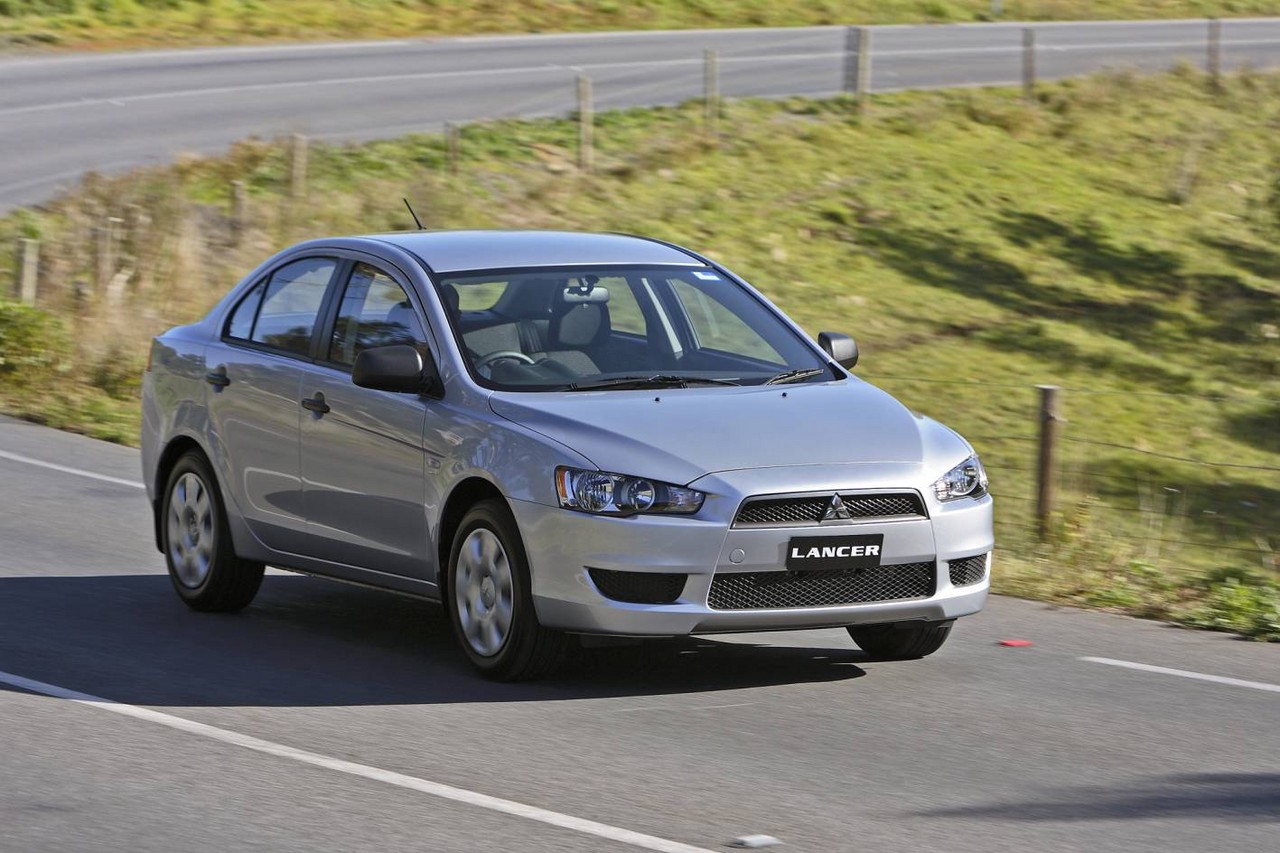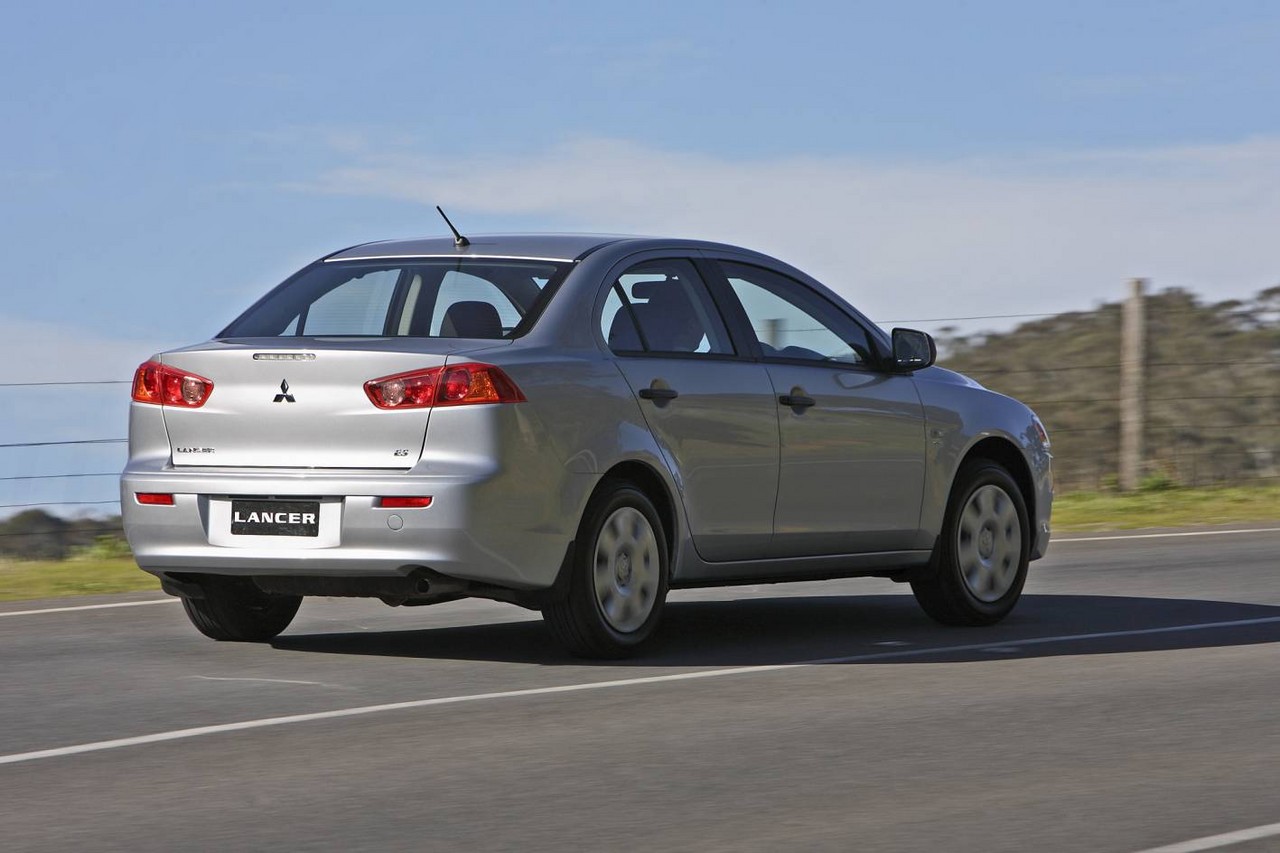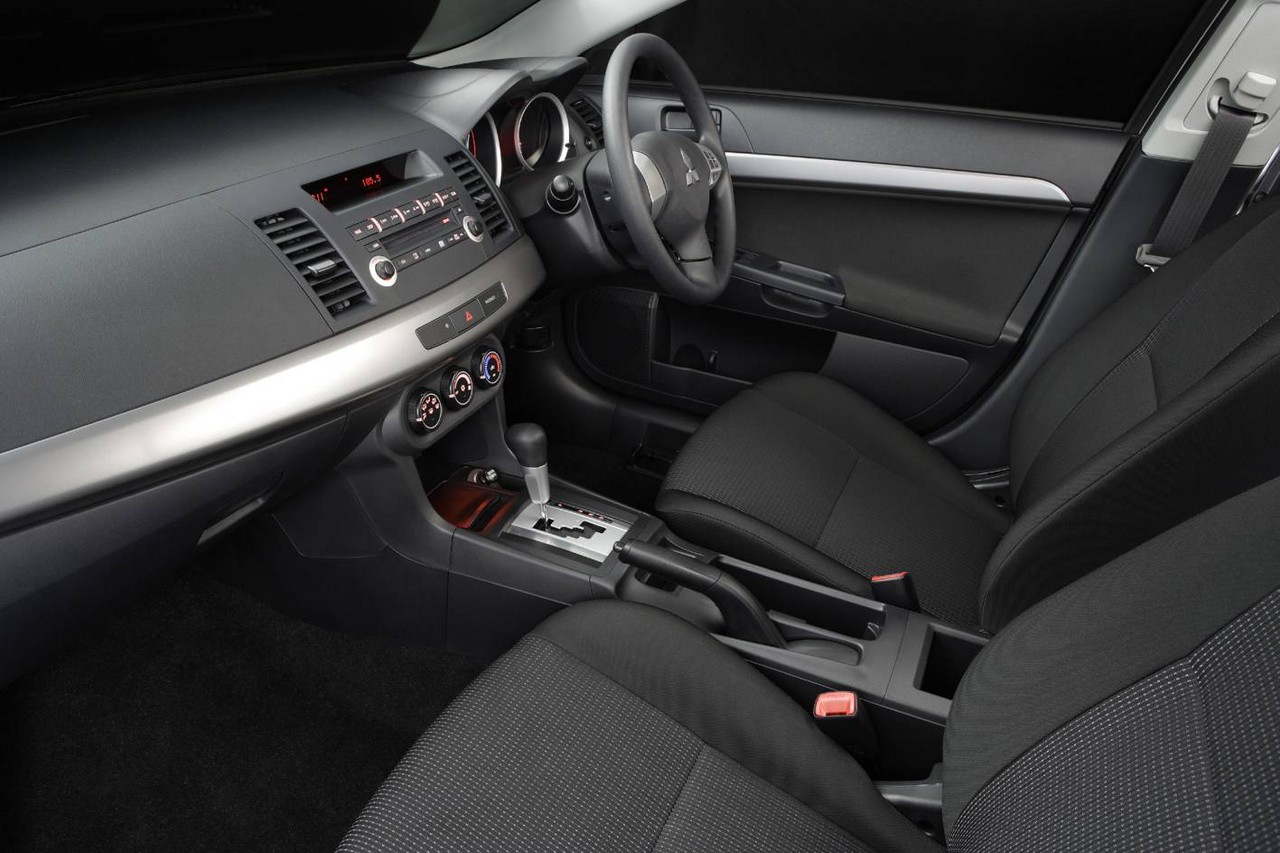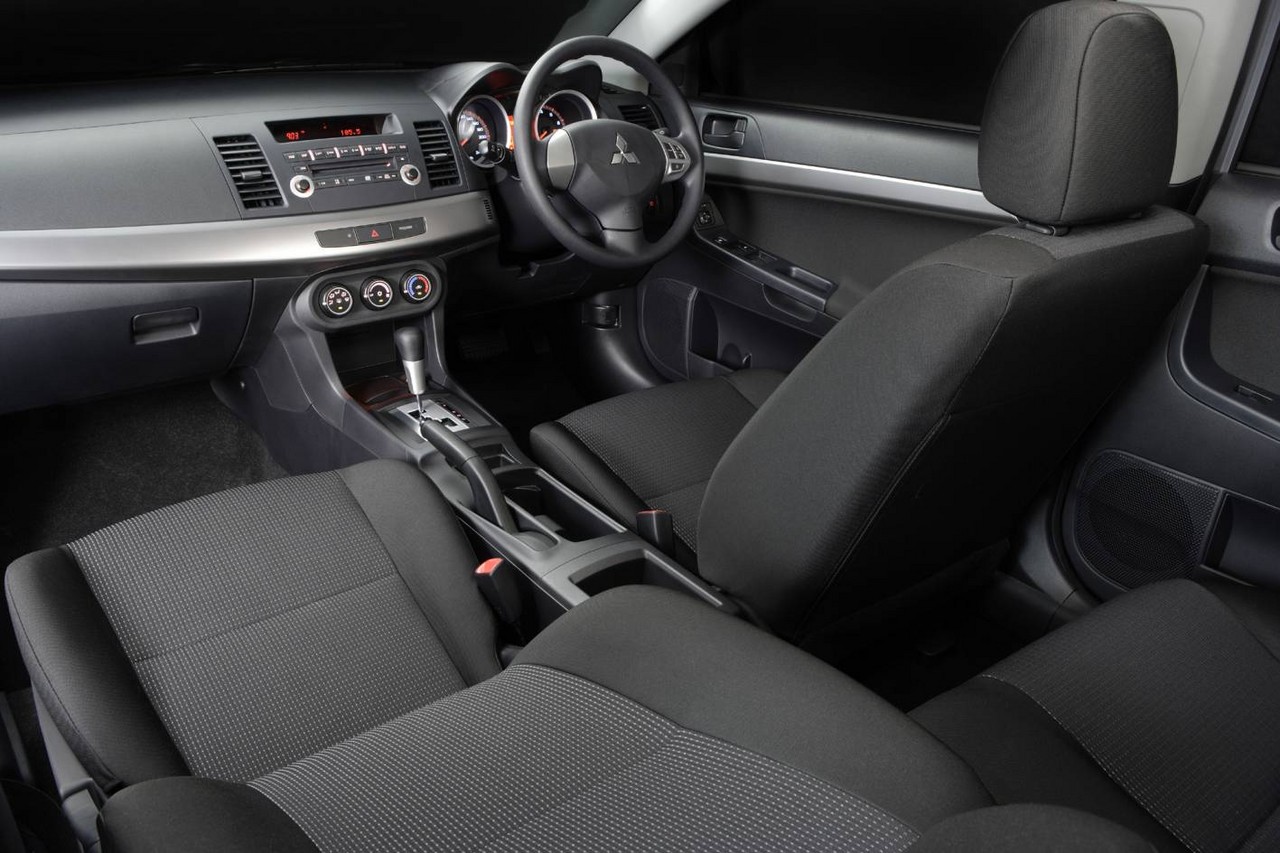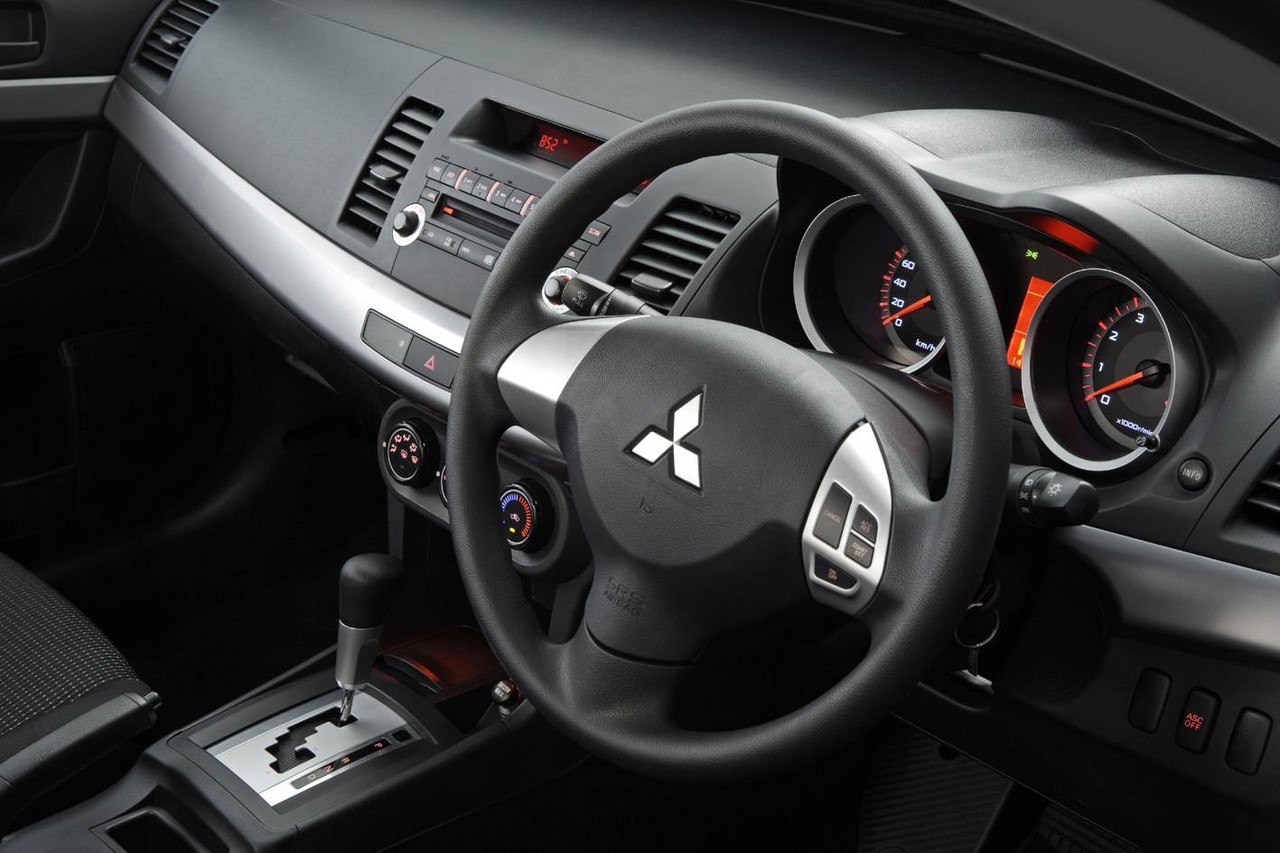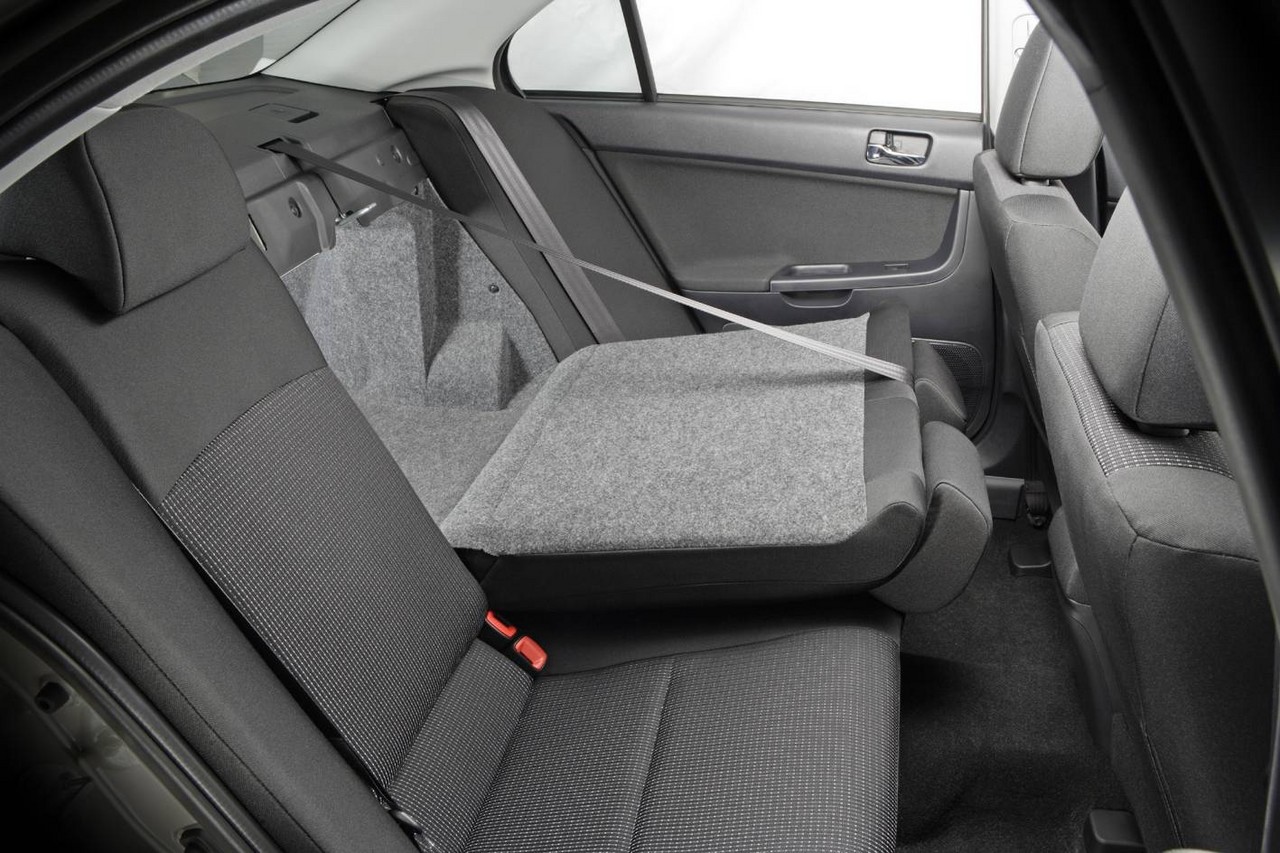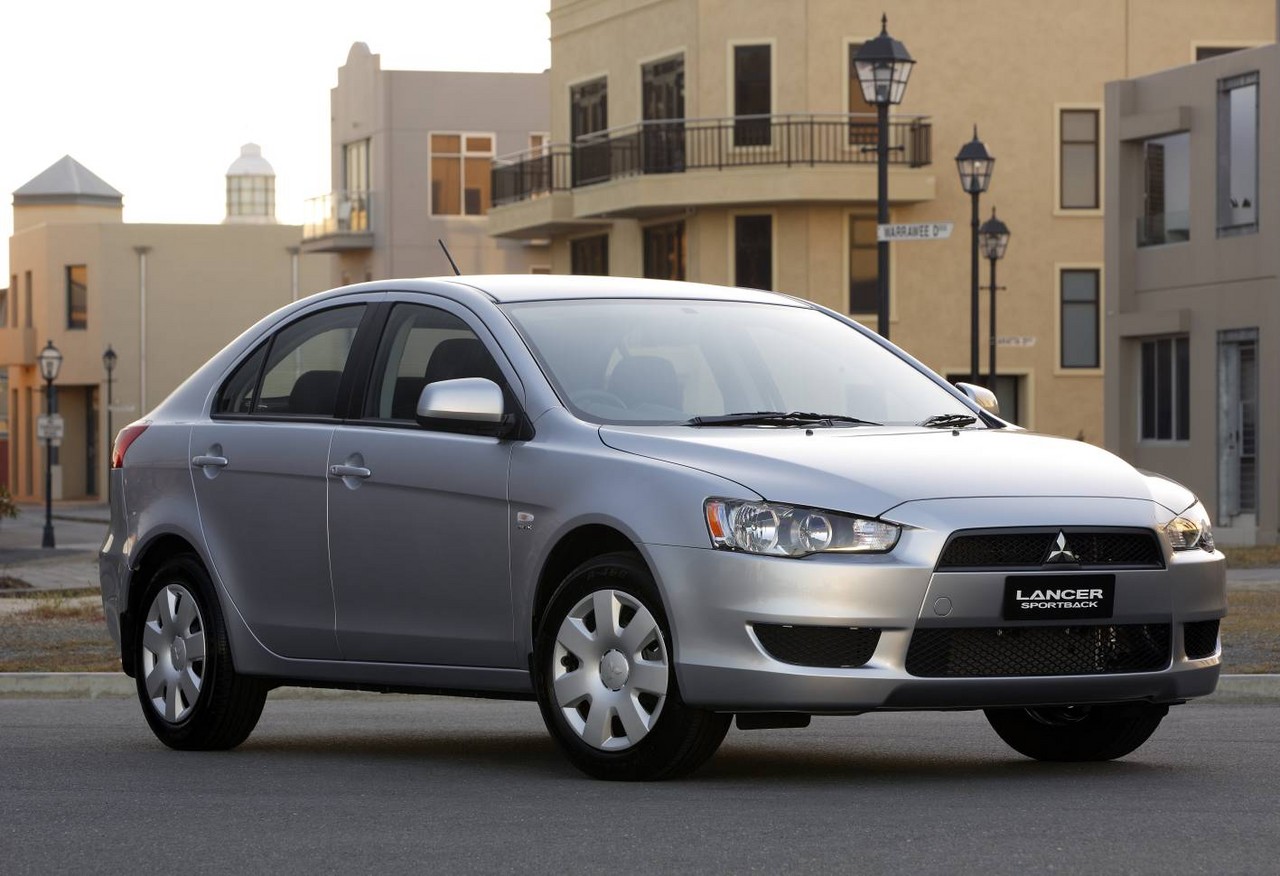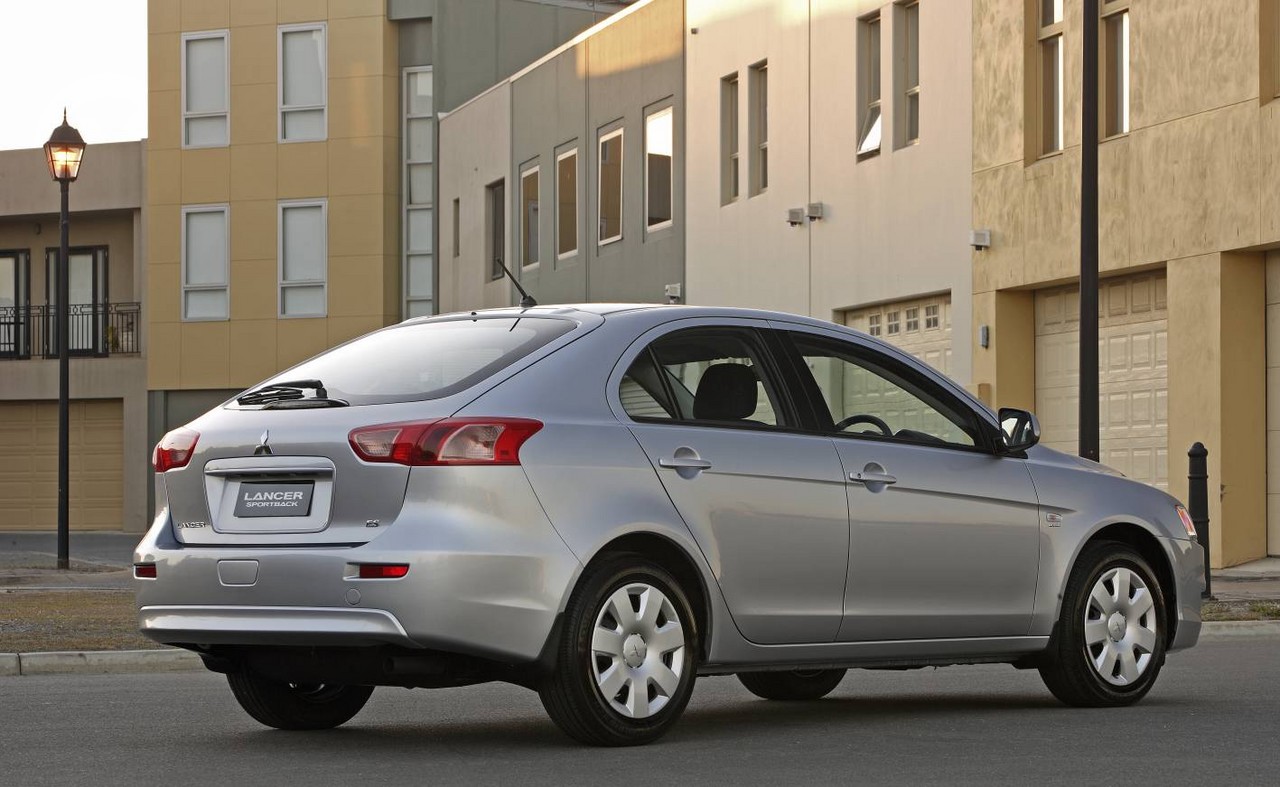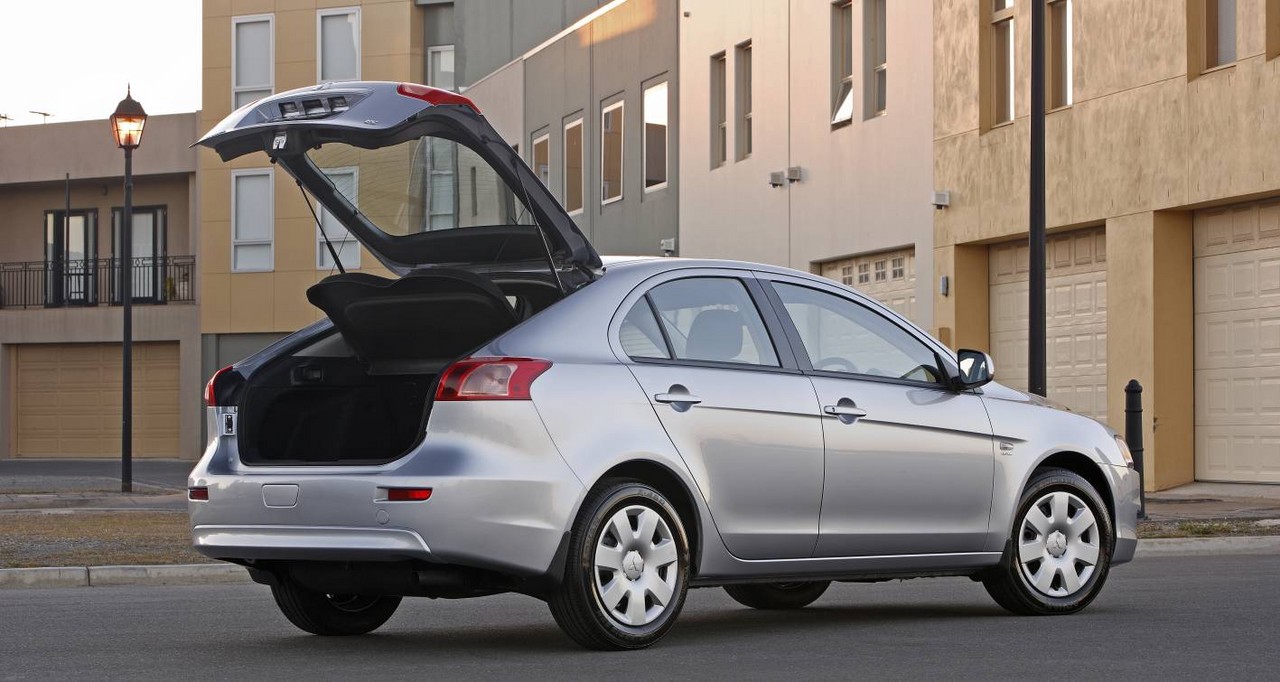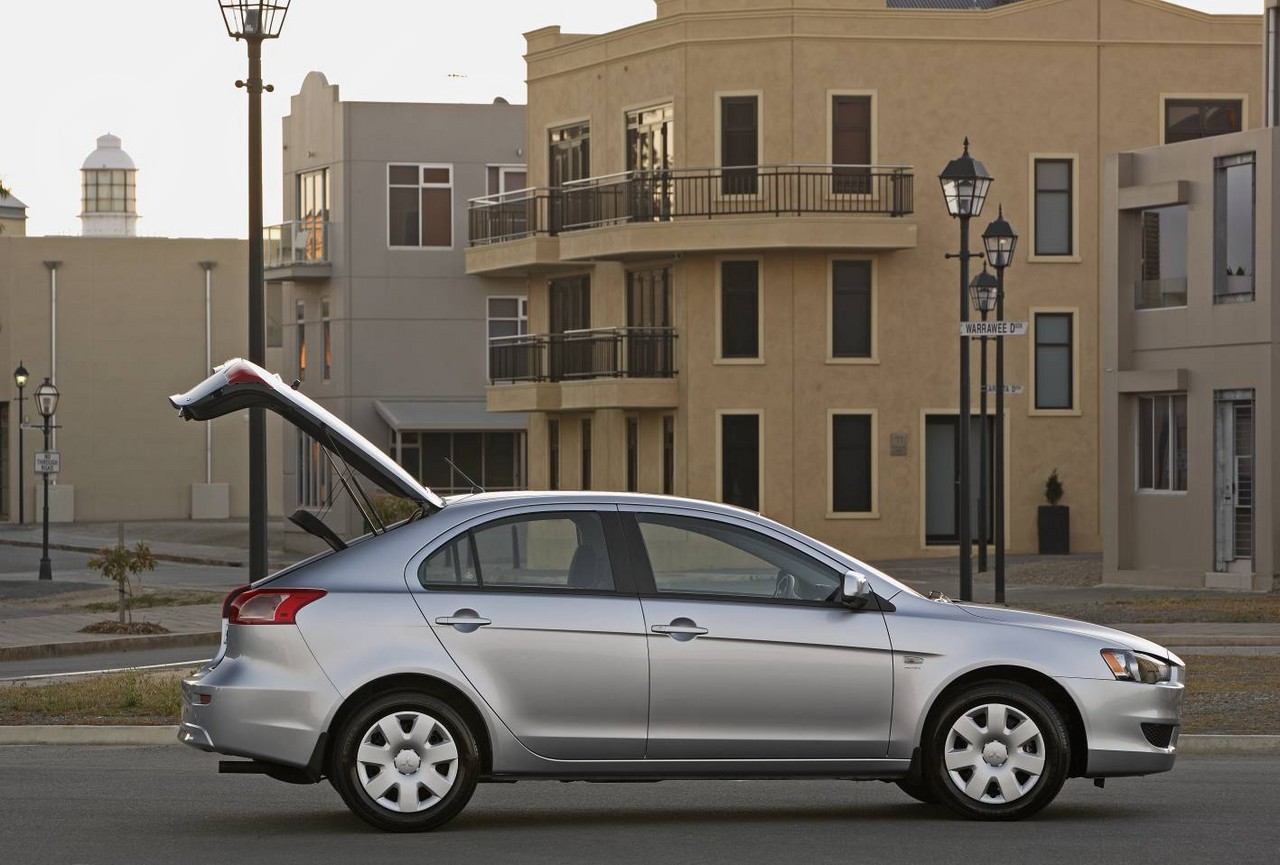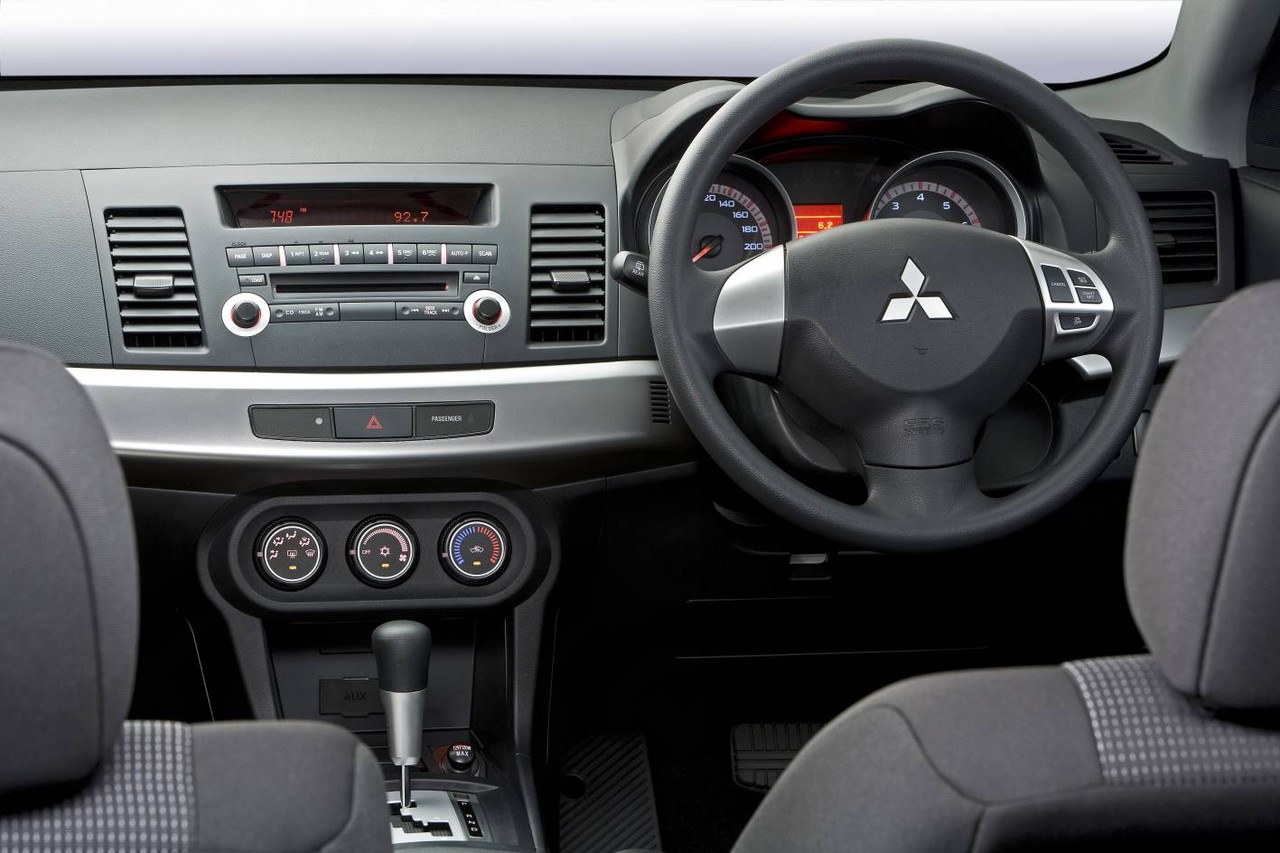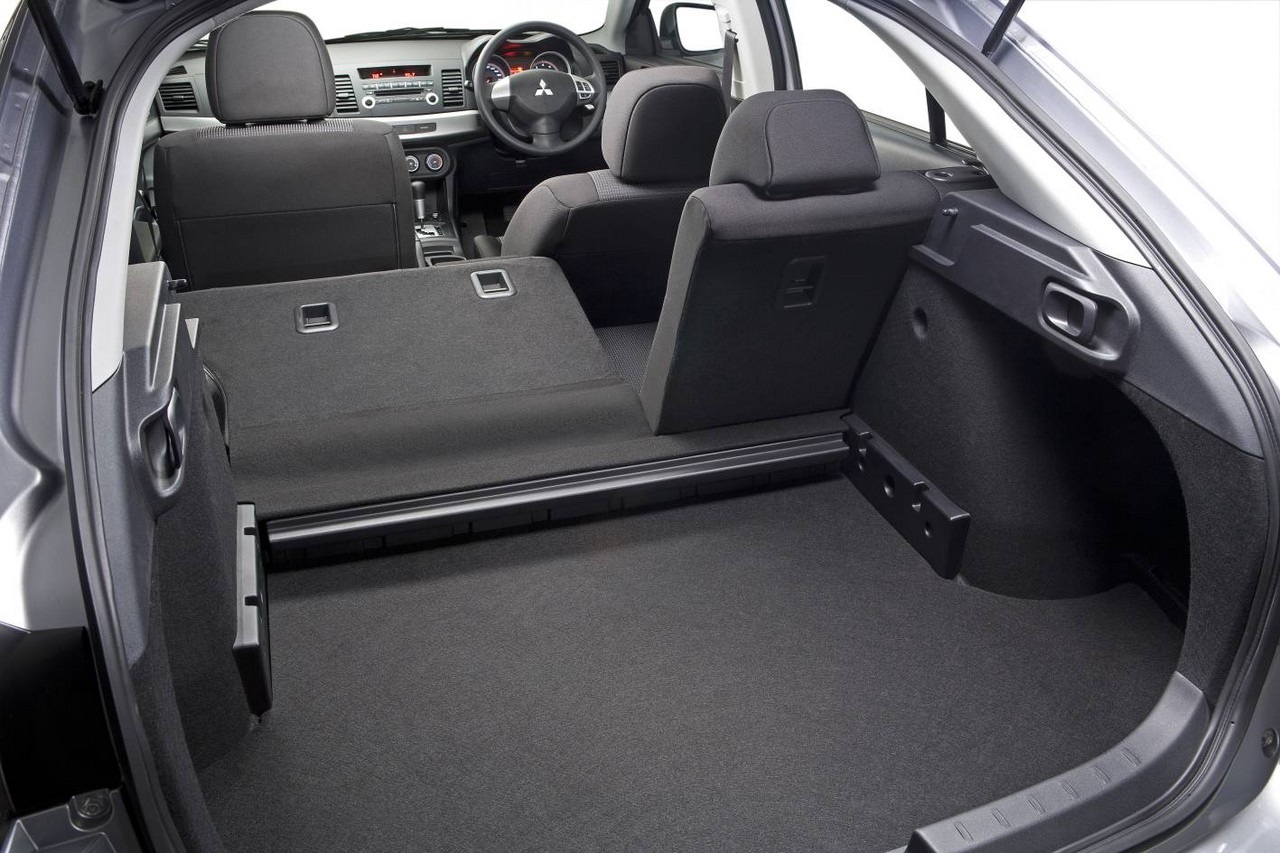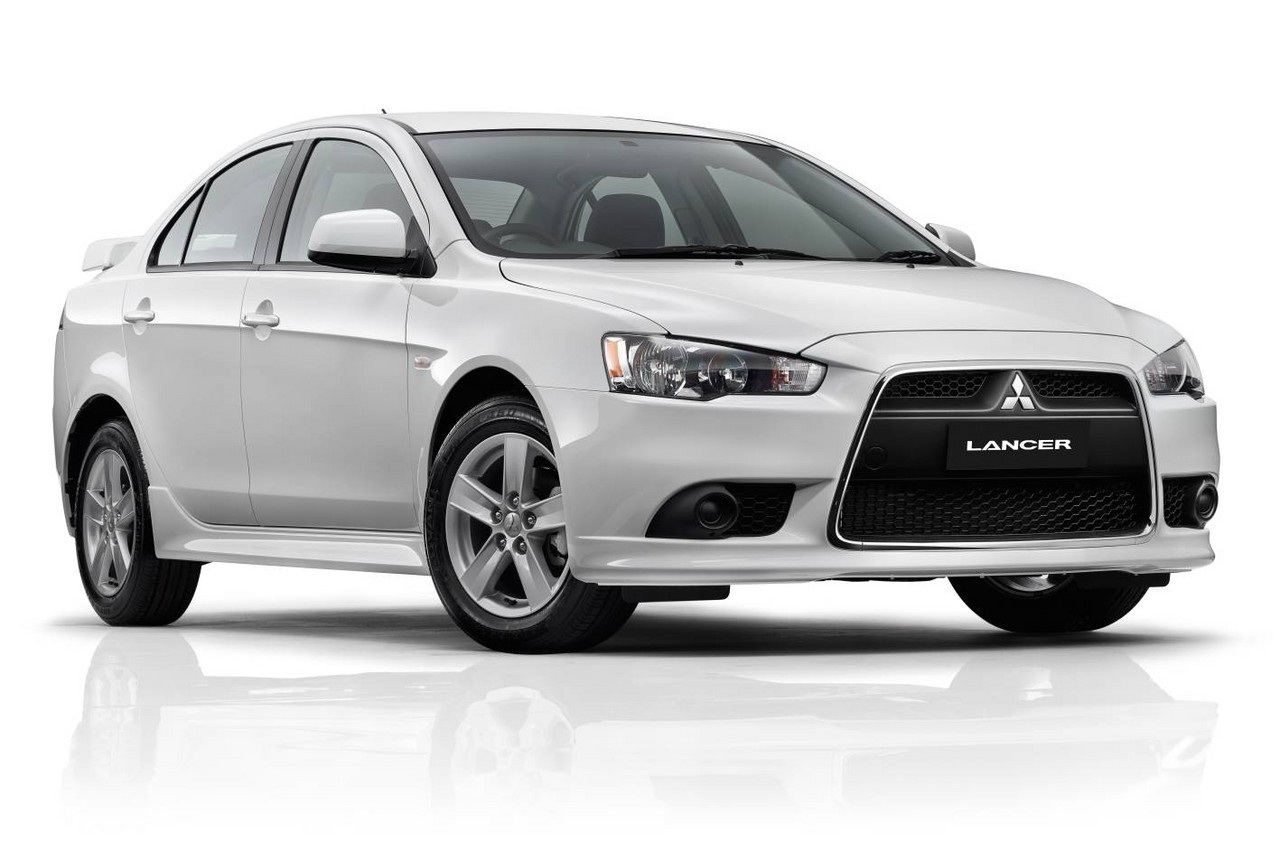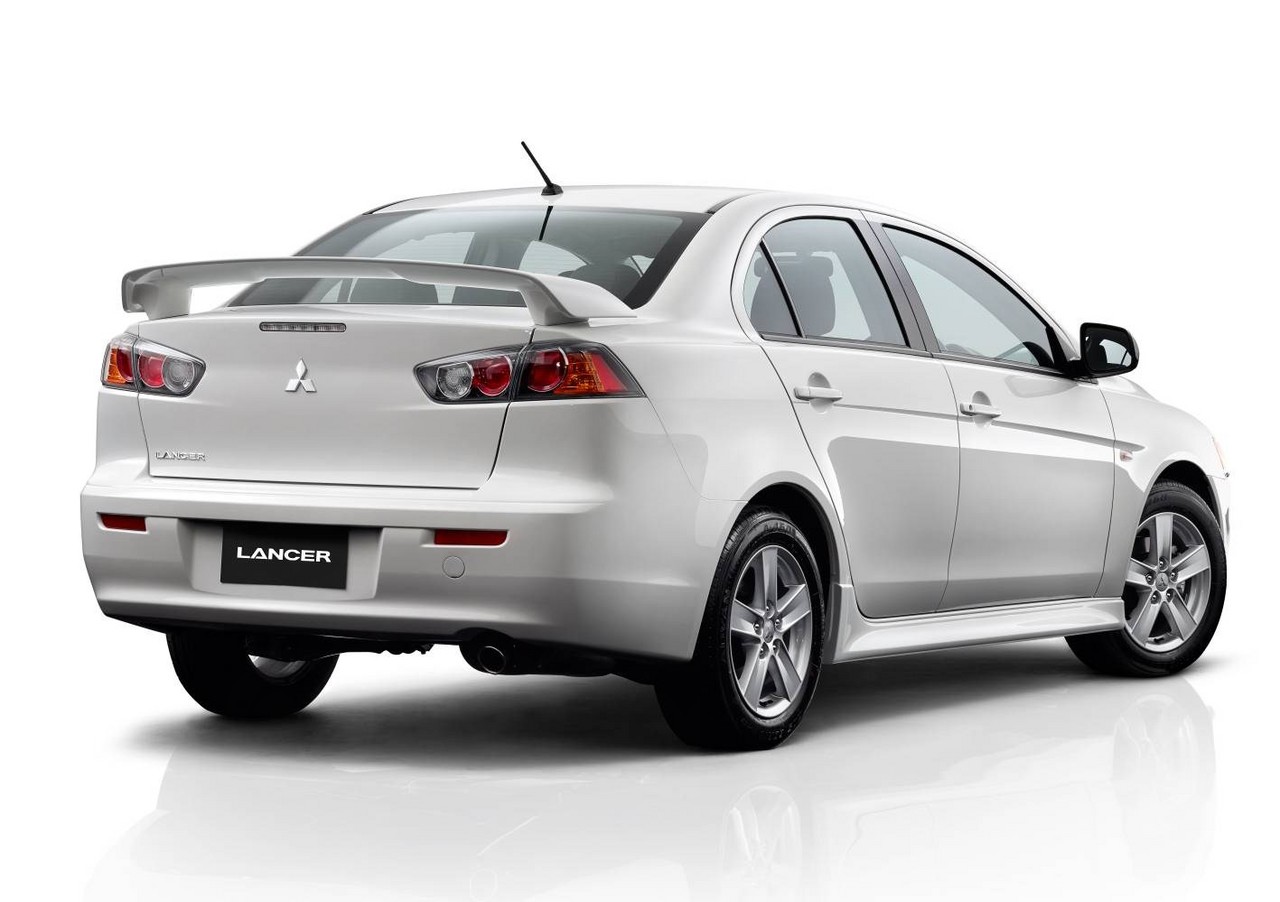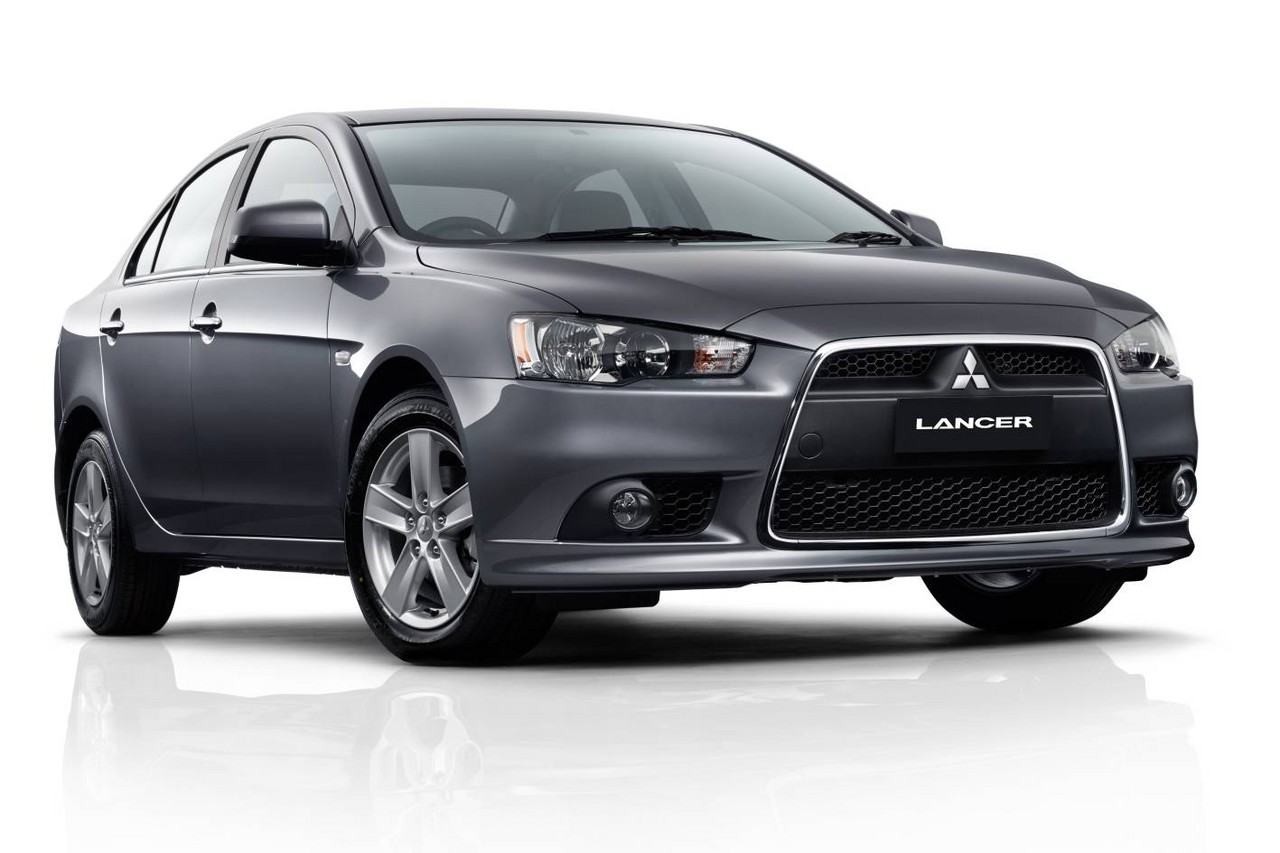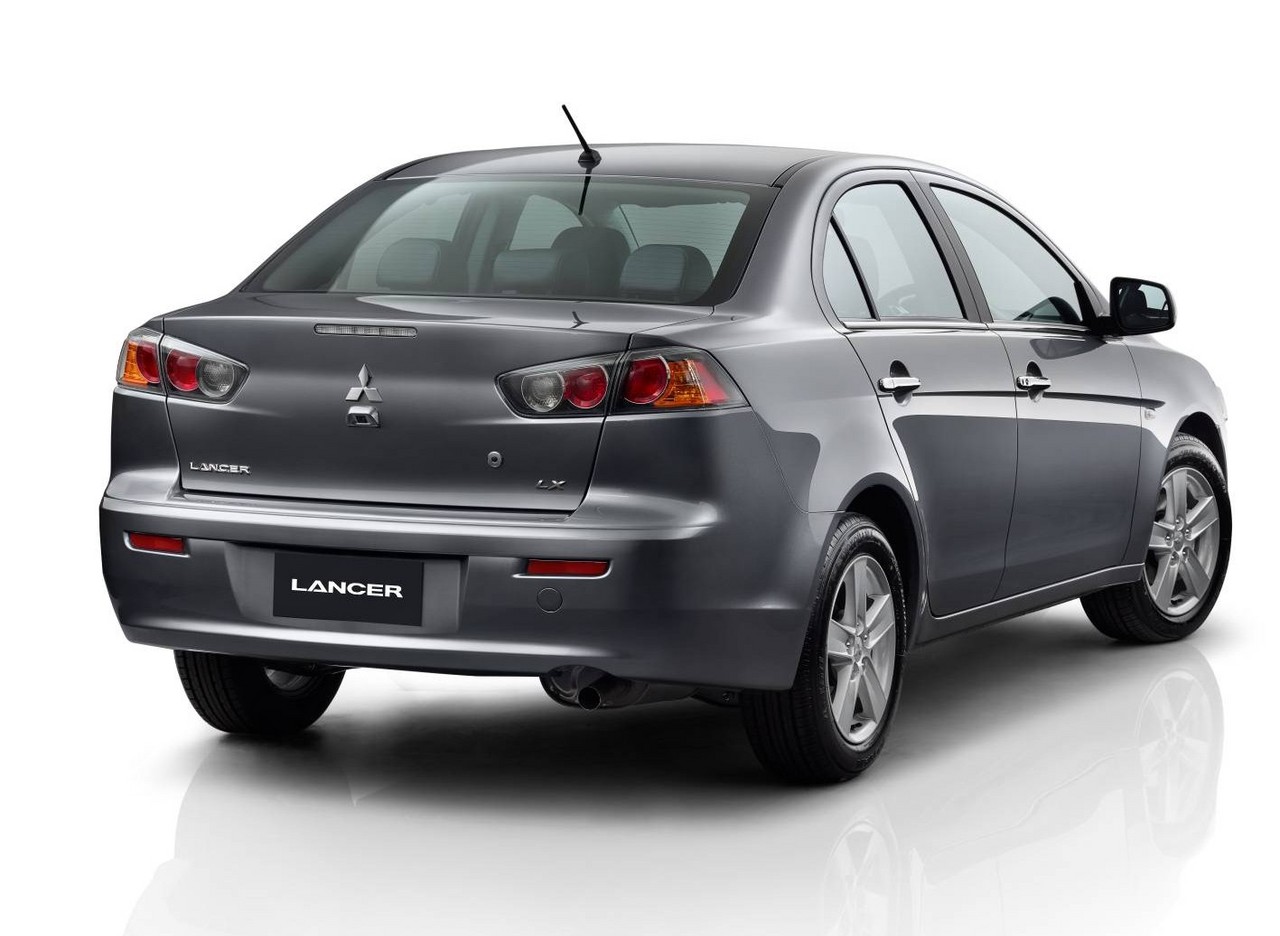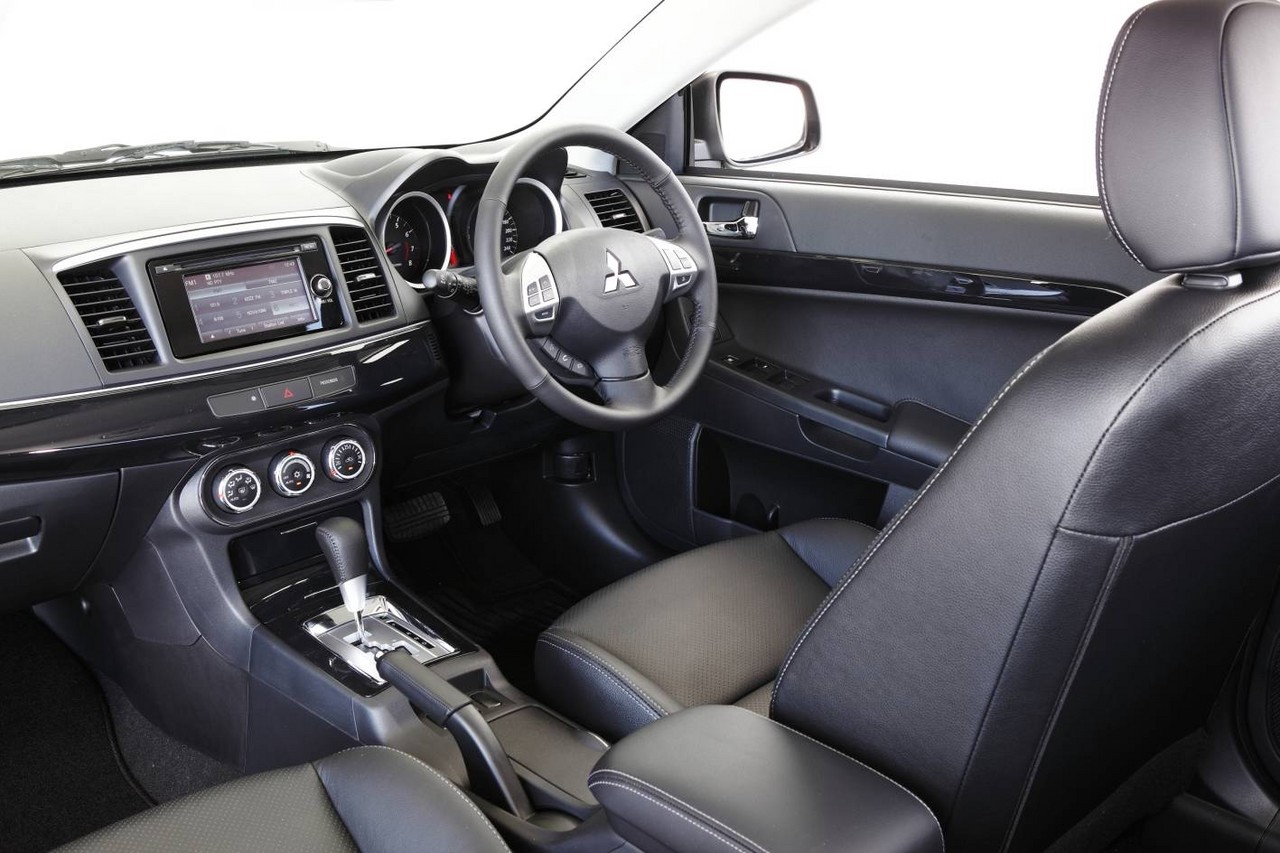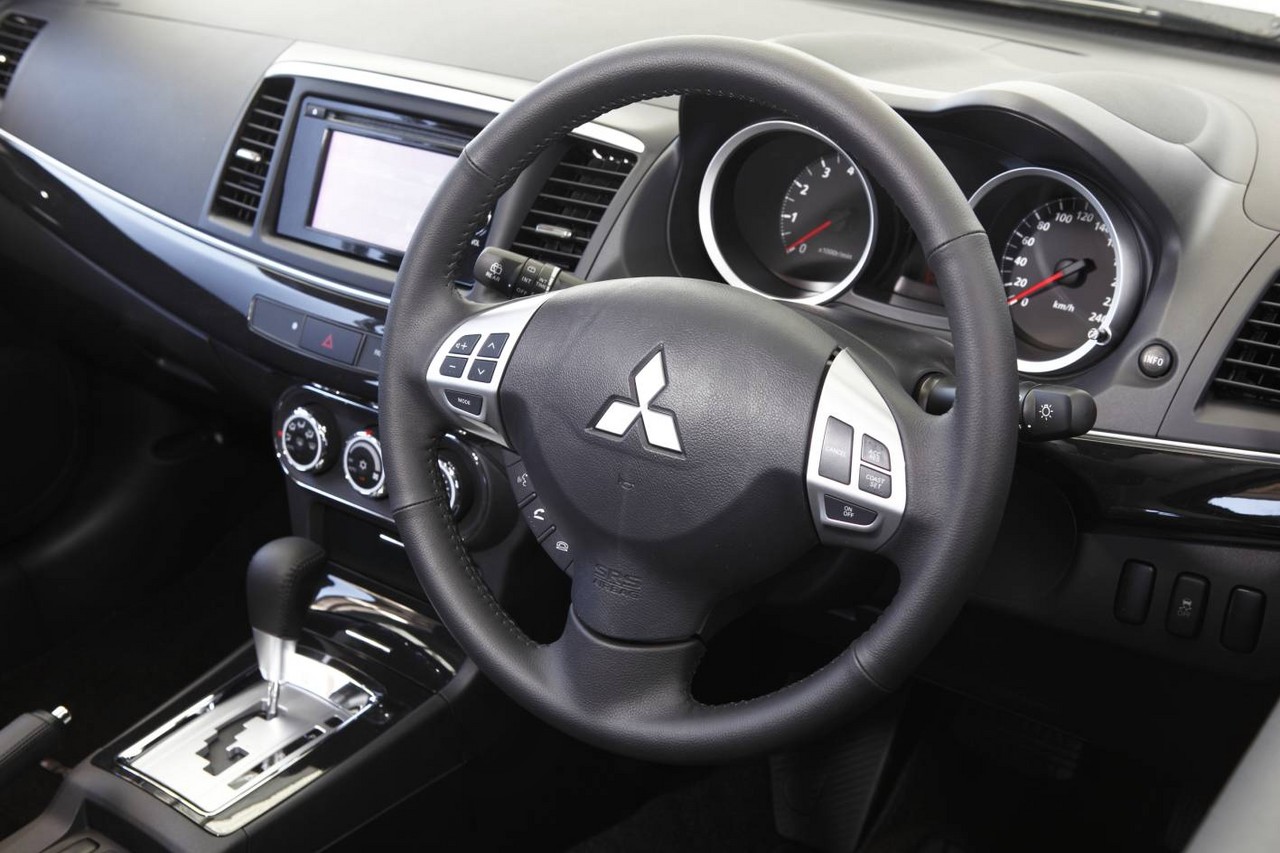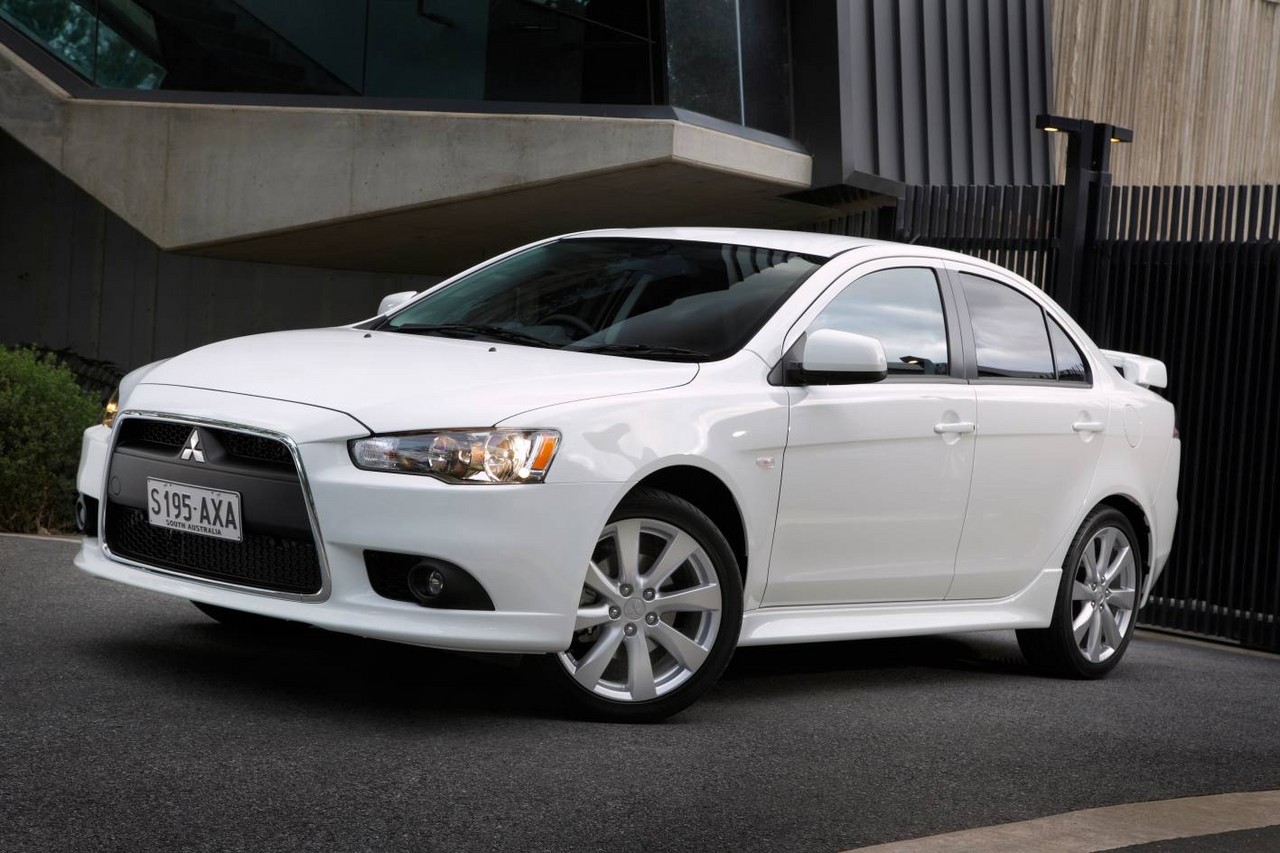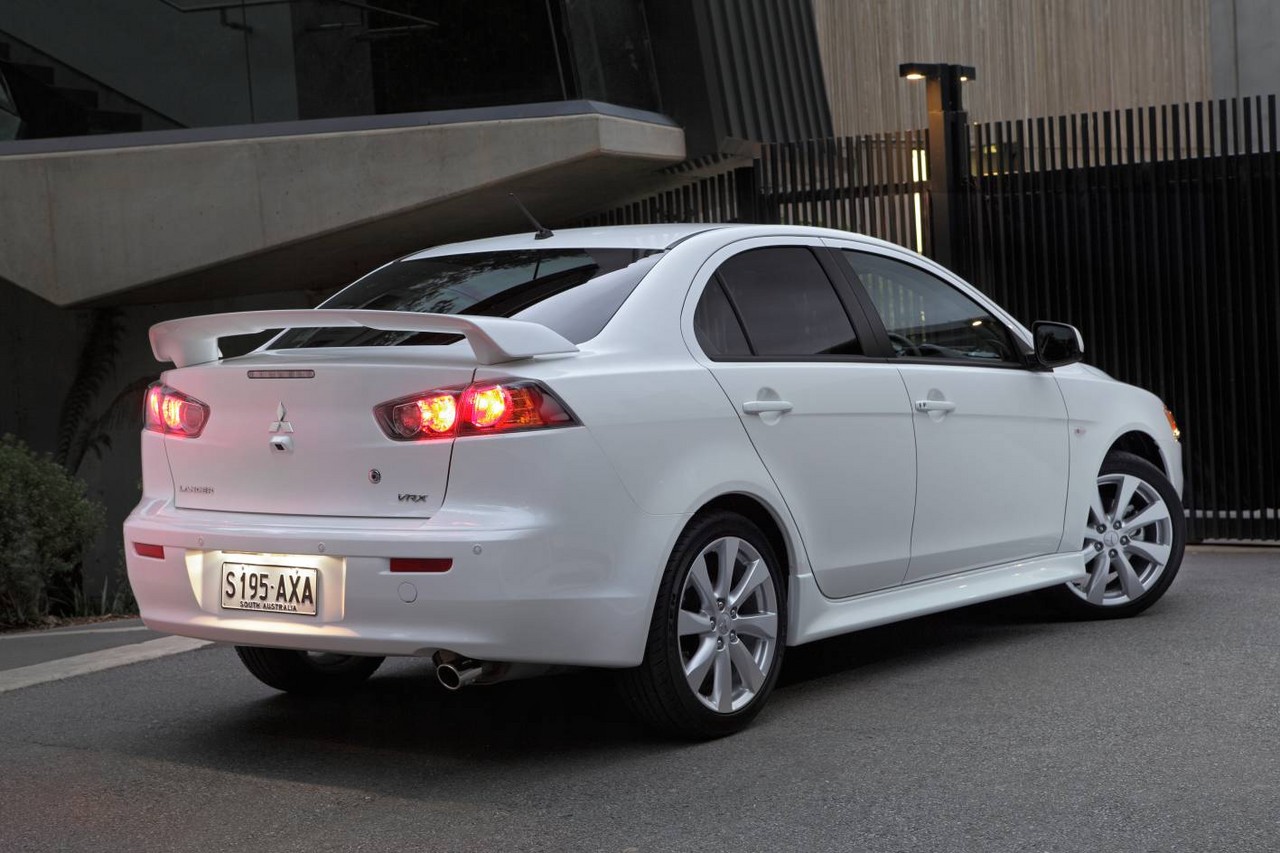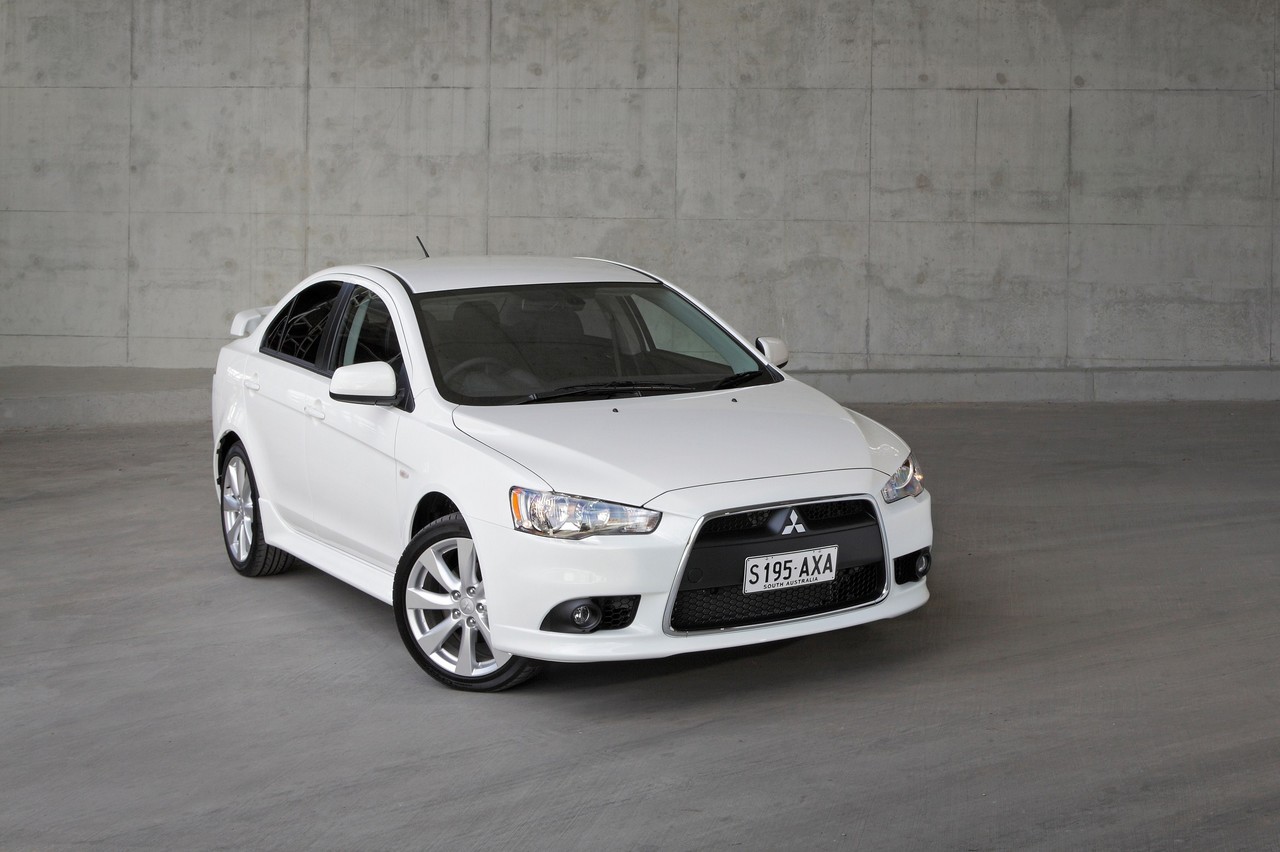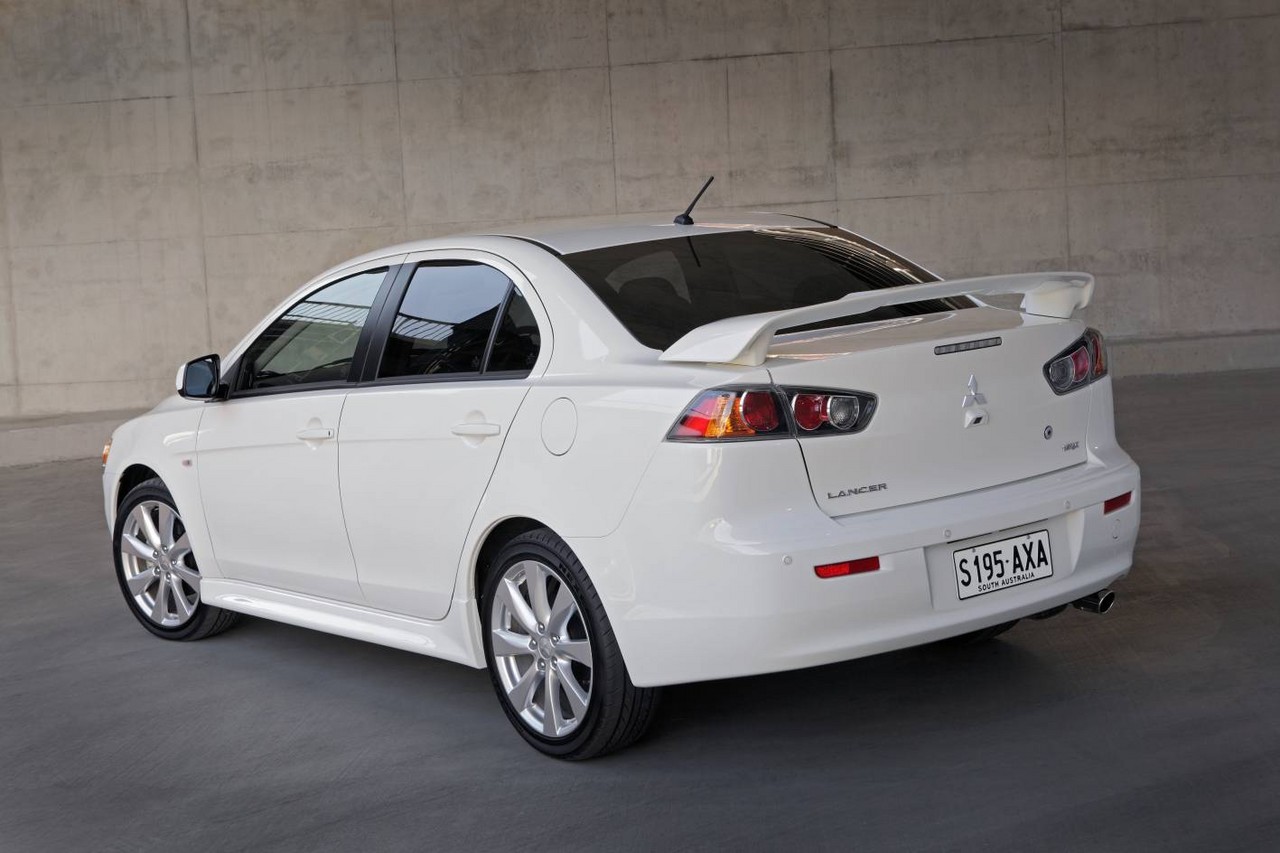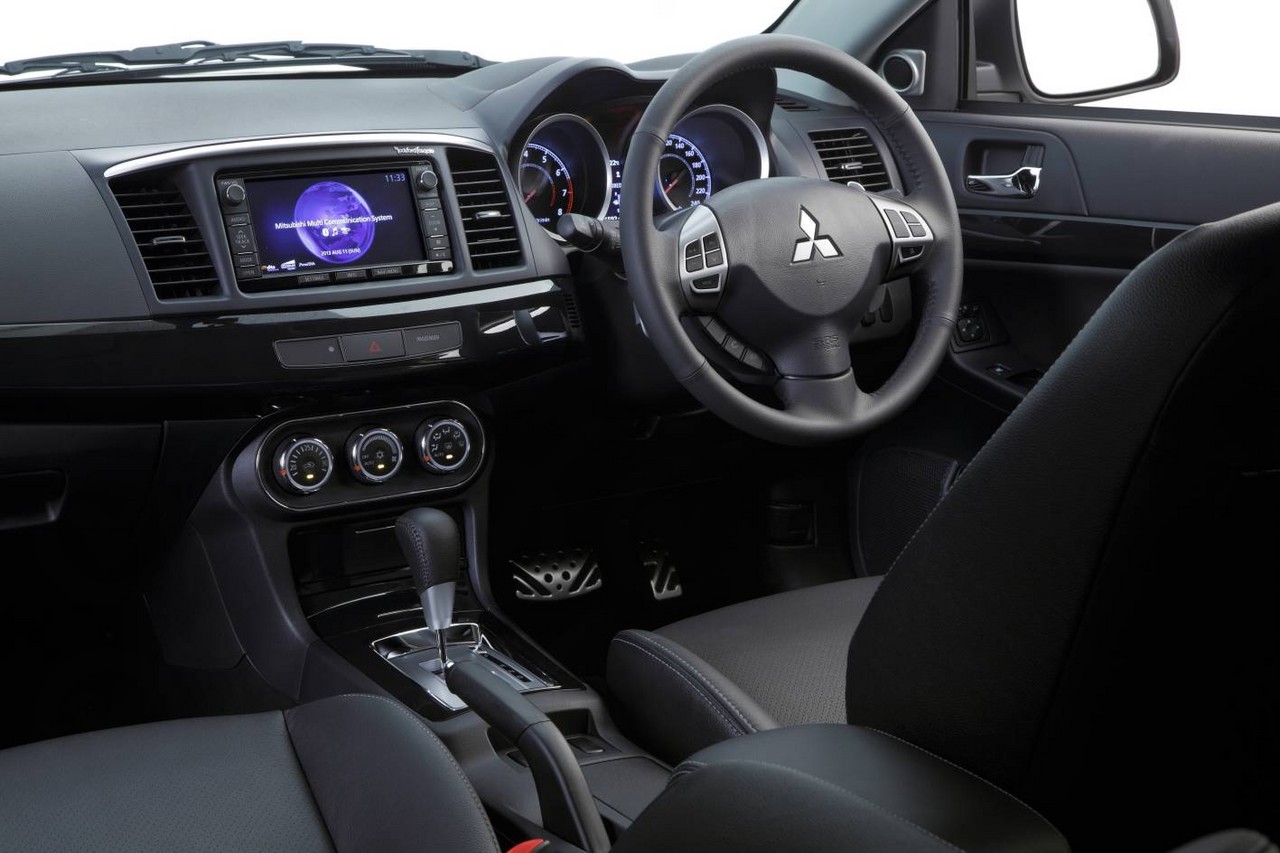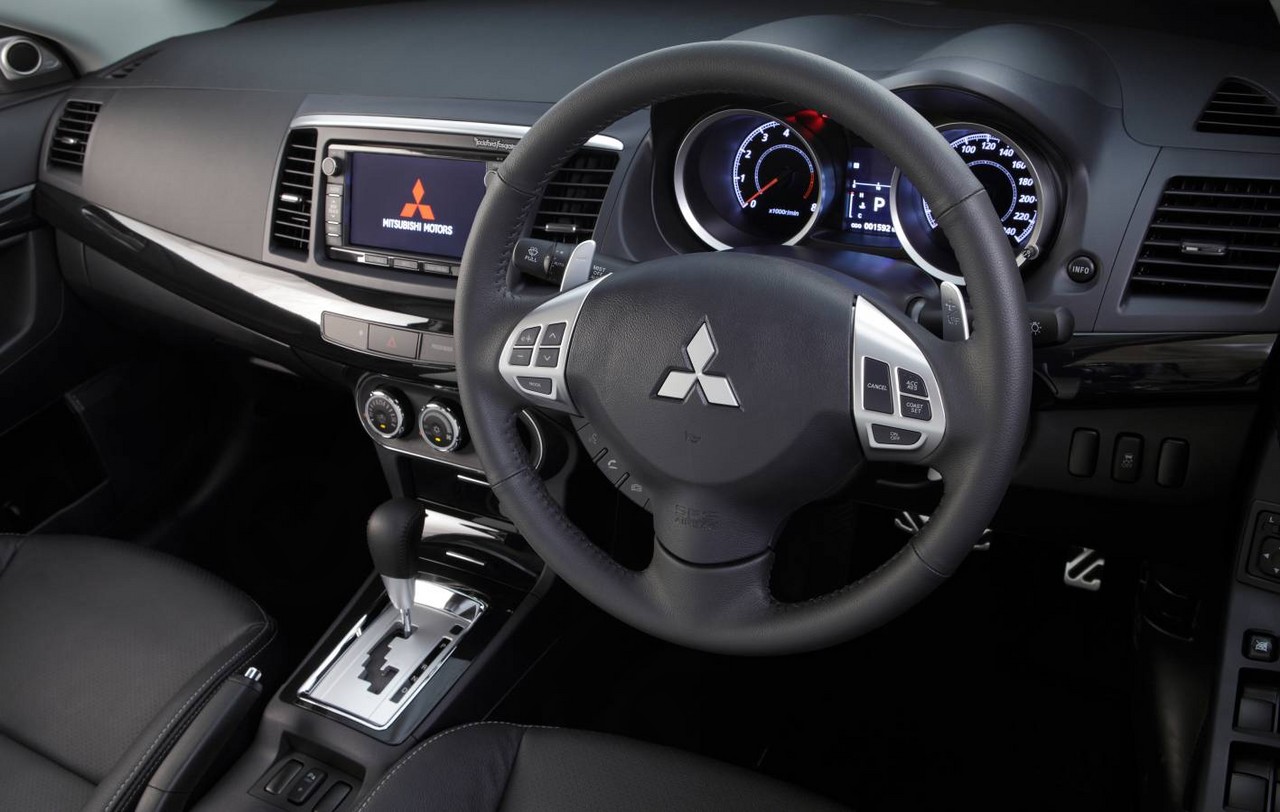
- Refined 2.0-litre petrol engine
- Responsive 2.4-litre petrol engine
- Accomplished ride/handling balance
- Accurate steering provides good feel
- Flat front seats lack support
- CVT drone when accelerating
- Cabin lacks sound insulation
- Variable build quality
Review: Mitsubishi CJ.I Lancer (2007-14)
Overview
Released in October 2007, the Mitsubishi CJ Series I (CJ.I) Lancer was initially available as a mid-size sedan, with Sportback (hatchback) models following in September 2008. Manufactured in Japan, the front-wheel drive Lancer was initially available with a 2.0-litre four-cylinder petrol engine mated to either a five-speed manual or six-speed continuously variable transmission (CVT). In September 2008, 2.4-litre four-cylinder petrol engines were introduced.
4B11 and 4B12 engines
The 2.0- and 2.4-litre four-cylinder petrol engines – Mitsubishi’s 4B11 and 4B12 engines, respectively – had an aluminium cylinder block and head, double overhead camshafts, four valves per cylinder and variable valve timing for both intake and exhaust valves (Mitsubishi’s MIVEC system).
Dimensions
Compared to its CH Lancer predecessor, the CJ Lancer sedan was 90 mm longer (at 4570 mm), 65 mm wider (1760 mm), 60 mm taller (1490 mm) and had a 35 mm longer wheelbase (2635 mm). Furthermore, the Mitsubishi’s Reinforced Impact Safety Evolution (RISE) unibody design resulted in a 56 per cent increase in torsional rigidity and a 50 per cent increase in bending rigidity. Relative to the sedan, the Lancer Sportback was 15 mm longer (at 4585 mm) and 25 mm taller (1515 mm).
Suspension
The CJ Lancer had MacPherson strut front suspension and multi-link rear suspension (both with coil springs, hydraulic shock absorbers and anti-roll bars).
| Body | Variant | Year | Engine | Trans. | Peak power | Peak torque |
|---|---|---|---|---|---|---|
| Sedan | ES | 2007-14 | 2.0-litre petrol I4 | 5sp man., 6sp CVT |
113 kW at 6000 rpm | 198 Nm at 4250 rpm |
| SX | 2010-11 | |||||
| Olympic Special | 2008 | |||||
| RX | 2009 | |||||
| VR | 2007-12 | |||||
| LX | 2012-14 | |||||
| Platinum Edition | 2009, 2012 |
|||||
| VRX | 2007-08 | |||||
| Activ | 2010, 2012 |
|||||
| VRX | 2008-14 | 2.4-litre petrol I4 | 5sp man., 6sp CVT |
125 kW at 6000 rpm | 226 Nm at 4100 rpm | |
| Aspire | 2008-12 | 2.4-litre petrol I4 | 6sp CVT | |||
| Sportback | ES | 2008-14 | 2.0-litre petrol I4 | 5sp man., 6sp CVT |
113 kW at 6000 rpm | 198 Nm at 4250 rpm |
| SX | 2010-14 | |||||
| VR | 2008-12 | |||||
| LX | 2012-14 | |||||
| Platinum Edition | 2009 | |||||
| RX | 2009 | |||||
| Activ | 2010, 2012 |
|||||
| VRX | 2008-14 | 2.4-litre petrol I4 | 5sp man., 6sp CVT |
125 kW at 6000 rpm | 226 Nm at 4100 rpm |
Safety equipment
Standard safety equipment for the CJ Lancer consisted of dual front airbags, driver’s knee airbag, ABS, electronic brake force distribution, brake assist, electronic stability control, traction control and front seatbelt pretensioners with load limiters. Initially, all variants other than the ES were also fitted with front side airbags and full-length curtain airbags (i.e. for front and rear occupants). From January 2010, however, front side airbags and full-length curtain airbags were fitted as standard across the range.
In September 2009, the electronic stability control system was upgraded; the brake assist system was also upgraded in September 2010.
ANCAP and Euro NCAP testing
In ANCAP crash testing , a 2007 Lancer ES sedan – fitted with dual front airbags and a driver’s knee airbag – received a four star adult occupant protection rating with a score of 31.56 out of 37. In the frontal offset crash test, there was a slight risk of serious chest injury for the driver. In the side impact test, high loadings were applied to the dummy’s pelvis.
ANCAP conducted an additional pole test on a vehicle fitted with curtain airbags, which provided an additional two points and a five star adult occupant protection rating with a score of 33.56 out of 37. This result, however, utilised the same side impact result for models without curtain airbags, such that models with curtain airbags could be expected to achieve a higher score in this test. ANCAP subsequently applied the occupant protection ratings for the sedan to the Sportback.
In Euro NCAP testing , a 2009 Lancer Sportback – fitted with dual front airbags, front side airbags and curtain airbags – received a five star safety rating which included an 81 per cent adult occupant protection rating and an 80 per child occupant protection rating. In the frontal offset impact, the head of the driver ‘bottomed out’ the airbag though the knees and femurs of the front occupants were well protected. In the pole test, protection of the chest was rated as weak, while protection of the abdomen was marginal.
Features
Standard features for the Lancer ES included a four speaker sound system with a CD player and MP3-compatibility, air conditioning, cruise control (with steering wheel controls), 60/40 split and folding rear seats, remote central locking, power mirrors and windows, a tilt adjustable steering wheel, height-adjustable driver’s seat, 12 volt power outlet, tinted windows, a trip computer and an immobiliser. Beyond this, the SX added 16-inch alloy wheels, a leather-wrapped steering wheel with audio controls and rear spoiler.
The Lancer VR was further equipped with a six speaker sound system with a six-disc CD player, front foglights, automatic headlights and rain-sensing wipers. The VRX was differentiated by its 18-inch alloys with sports suspension, a strut tower brace, bigger brakes and body kit; the VRX also featured Bluetooth connectivity.
Compared to the VR, the Lancer Aspire was distinguished by its nine speaker Rockford Fosgate sound system with a six-disc CD player, leather seats, high intensity discharge (HID) headlights, Bluetooth connectivity and woodgrain finished instrument panel, shift panel and front console. As a special introductory offer, early models were also fitted with the Mitsubishi Multi Communication System (MMCS) which consisted of a seven-inch touch screen, satellite navigation, single CD/DVD player, 30GB hard drive and audio controls.
September 2009: Lancer update
In September 2009, the CJ Lancer underwent a minor update as the ES variants gained an additional floor console storage compartment and lidded cupholder. Furthermore, the VRX was fitted with the nine speaker Rockford Fosgate sound system, an acoustic windscreen and leather-wrapped handbrake; Aspire variants were further equipped with MMCS as standard.
Visually, the post-September 2009 models could be identified by their VRX tail-lights, which were made standard across the range; furthermore, the VR was fitted with a new chrome upper grille and the Aspire received chromed door handles. Inside, there was a new instrument cluster.
September 2010: Lancer update
The CJ Lancer underwent another update in September 2010, with Bluetooth 2.0 connectivity made standard for the SX, VR, VRX and Aspire variants. Other changes included improved noise insulation, a USB port, colour LCD and ‘welcome’ lights.
October 2011: Lancer update
In October 2011, the CJ Lancer range was updated as the SX variant was discontinued, but the ES and VR were fitted with electric power steering for improved fuel economy. With respect to features, the VR and VRX were fitted with a reversing camera (displayed in the rear view mirror), the latter also fitted with leather-trimmed seats and power adjustable and heated front seats. The Aspire was also fitted with power adjustable and heated front seats, a reversing camera (displayed in the MMCS) and an electrochromatic mirror.
Interior fittings were also upgraded as the ES received new seat fabrics, chrome-plated inner door handles, dark silver decoration panels and, for Sportback models, a new rear spoiler. The VR was fitted with front corner air dams and the VRX received new 18-inch alloy wheel designs, a Ralliart-style grille and front bumper and gloss black interior panels. The Aspire was also fitted with new 18-inch alloy wheel designs and gloss black interior panels.
August 2012: Lancer update
In August 2012, the CJ Lancer range was revised as the VR and Aspire variants were discontinued and an LX variant was introduced. Standard features were extended to include Bluetooth 2.0 connectivity with voice recognition and audio streaming, a leather-wrapped steering wheel (with audio and phone controls) and a new audio system; for models with continuously variable transmissions (CVTs), a Hill Start Assist function was also standard. Furthermore, the VRX variant received iPod connectivity and a 6.1-inch display with a rear view camera.
Compared to the ES, the LX was further equipped with 16-inch alloy wheels, climate control air conditioning, a power adjustable driver’s seat, leather seat trim, heated front seats, a 6.1-inch colour display, a rear view camera, rear parking sensors and a proximity key.
August 2013: Lancer update
In August 2013, standard features were extended to include 16-inch alloy wheels, Mitsubishi’s ‘LINK’ audio systems and keyless entry; cosmetic changes included new seat fabrics, dark silver interior trim, synthetic leather door inserts and chrome door handles. Furthermore, the VRX gained a seven-inch touch screen with satellite navigation and 3D maps.
2008 Lancer Olympic Special
In April 2008, a limited-run Olympic Special variant was released. Based on the VRX, albeit with a 2.0-litre engine, the Olympic Special was distinguished by its Rockford Fosgate sound system with full iPod integration, MMCS, black leather seats, woodgrain interior trim and chrome exterior highlights.
2009 and 2012 Lancer Platinum Edition
In January 2009, a limited-run Platinum Edition was released. Compared to the VR, the Platinum Edition was equipped with the Mitsubishi Multi Communication System (MMCS) which consisted of a seven-inch touch screen, satellite navigation, CD/DVD player and audio controls. Visually, the Platinum Edition could be identified by its chrome grille and belt line moulding.
In January 2012, the Platinum Edition returned. On this occasion, the Platinum Edition was based on the ES but further equipped with 16-inch alloy wheels, leather-trimmed seats, heated front seats, rear parking sensors, a reversing camera (displayed within the rear view mirror), Bluetooth connectivity with voice commands and steering wheel audio controls. Visually, the Platinum Edition could also be identified by its side air dams, chrome exhaust tip and ‘Platinum’ badges; sedan models were also fitted with a rear spoiler.
2009 Lancer RX
Released in September 2009, the limited-run RX was similarly equipped to the ES but added 16-inch alloy wheels and ‘RX’ badges; Sportback models were also equipped with a hatchback spoiler.
2010 and 2012 Lancer Activ
In March 2010, a limited-run Activ variant was released. Based on the ES, the Activ was distinguished by its 16-inch alloy wheels, Bluetooth connectivity, leather-wrapped steering wheel (with audio and Bluetooth controls) and rear privacy glass. Visually, the Activ could be identified by its side air dams, rear spoiler, chromed exhaust tip and ‘Activ’ badging. The Activ returned in April 2012 with the same distinguishing features.
Brochures
- Brochure: Mitsubishi CJ.I Lancer (October 2009)
- Brochure: Mitsubishi CJ.I Lancer (August 2010)
- Brochure: Mitsubishi CJ.I Lancer (October 2011)
- Brochure: Mitsubishi CJ.I Lancer (September 2013)
Specifications
- Technical Specifications: Mitsubishi CJ.I Lancer Sedan (October 2008)
- Technical Specifications: Mitsubishi CJ.I Lancer Sportback (October 2008)
Related links
- Mitsubishi News: Mitsubishi Introduces The Improved Lancer Line-Up (October 2011)
- Mitsubishi News: Mitsubishi Celebrates 30 Years With Anniversary Edition Lancer (October 2011)
- Mitsubishi News: Platinum Style For Mitsubishi’s Popular Lancer (January 2012)
- Mitsubishi News: Get Activ This Autumn With Mitsubishi (May 2012)
- Mitsubishi News: Lancer LX Leads Mitsubishi Motors’ Updated 2013 Range (August 2012)
- Mitsubishi News: 2014 Lancer Range – Technology In Style (August 2013)
Review: Mitsubishi CJ.II Lancer (2014-15)
Overview
Released in April 2014, the Mitsubish CJ Series II (CJ.II) Lancer introduced a simplified range that consisted of ES Sport, LX and VRX sedans and GSR hatchbacks (see table below). Visually, the CJ.II Lancer could be identified by its Ralliart-style grille which was made standard across the range.
August 2014 update
The Lancer range was revised in August 2014 as the LX variant was discontinued, an LS variant was introduced and the VRX was replaced by the XLS. Visually, the post-August 2014 Lancers could be identified by their door mirrors with indicator lamps, Emergency Stop Signal (ESS) flashing brake lights and new door trims.
| Body | Variant | Year | Engine | Trans. | Peak power | Peak torque |
|---|---|---|---|---|---|---|
| Sedan | ES Sport | 2014-15 | 2.0-litre petrol I4 | 5sp man., 6sp CVT |
110 kW at 6000 rpm | 197 Nm at 4200 rpm |
| LX | 2014 | |||||
| LS | 2014-15 | |||||
| VRX | 2014 | 2.4-litre petrol I4 | 5sp man., 6sp CVT |
125 kW at 6000 rpm | 226 Nm at 4100 rpm | |
| XLS | 2014-15 | |||||
| Sportback | GSR | 2014-15 | 2.4-litre petrol I4 | 5sp man., 6sp CVT |
125 kW at 6000 rpm | 226 Nm at 4100 rpm |
Safety equipment
Compared to its CJ.I predecessor, standard safety equipment for the CJ.II Lancer was unchanged.
Features: Lancer ES Sport
Standard features for the Lancer ES Sport consisted of 16-inch five-spoke alloy wheels with 205/60 R16 92H tyres, four speaker sound system with a CD player, MP3-compatibility, auxiliary inputs (3.5 mm/USB/iPod), Bluetooth connectivity with voice activation and audio streaming, climate control air conditioning, cloth seat trim, cruise control, leather-wrapped steering wheel with audio controls, 60/40 split and folding rear seats, remote central locking, power windows and mirrors, a tilt adjustable steering wheel, height adjustable driver’s seat, 12 volt power socket, trip computer, an immobiliser and rear spoiler.
Features: Lancer LX, GSR Sportback and VRX
Compared to the ES Sport, the Lancer LX was further equipped with a six speaker sound system, leather seat facings, front sports seats with heating, power adjustable driver’s seat, front fog lights, reversing camera and proximity key. The Lancer LX omitted the rear spoiler of the ES Sport and could be identified by its chrome door handles and beltline moulding.
Relative to the LX, the GSR Sportback omitted leather seat facings and a power adjustable driver’s seat, but added 18-inch ten-spoke alloy wheels with 215/45 R18 89W tyres, a 6.1-inch colour touch screen with a rear view camera interface, automatic headlights, rain-sensing wipers, rear privacy glass, alloy pedals and a rear spoiler. While the Lancer ES Sport and LX both had electric power-assisted steering, the VRX and GSR had conventional hydraulic power-assisted steering. From August 2014, the GSR Sportback had Ralliart cloth seat trim with contrast stitching.
Compared to the GSR, the Lancer VRX was further equipped with an eight speaker Rockford Fosgate audio system with subwoofer, Mitsubishi Multi Communication System (MMCS) with satellite navigation, leather seat facings, power adjustable driver’s seat, rear parking sensors and electrochromatic rear view mirror; models with the CVT also had steering wheel gearshift paddles.
Features: Lancer LS and XLS
Compared to the ES Sport, the Lancer LS was further equipped with a 6.1-inch colour touch screen, leather-faced seats, a power adjusteable driver’s seat, heated front seats, a reversing camera and a proximity key.
The Lancer XLS was further equipped with 18-inch alloy wheels with sports suspension, a Rockford Fosgate sound system with nine speakers, satellite navigation with 3D maps, a seven-inch colour touch screen and an SD card input, automatic headlights, rain-sensing wipers, power folding door mirrors and an electrochromatic rear view mirror.
Brochure
Related links
- Mitsubishi News: Mitsubishi Adds Sports Features, GSR Sportback to Lancer Range (April 2014)
- Wikipedia.org: Mitsubishi CJ Lancer
